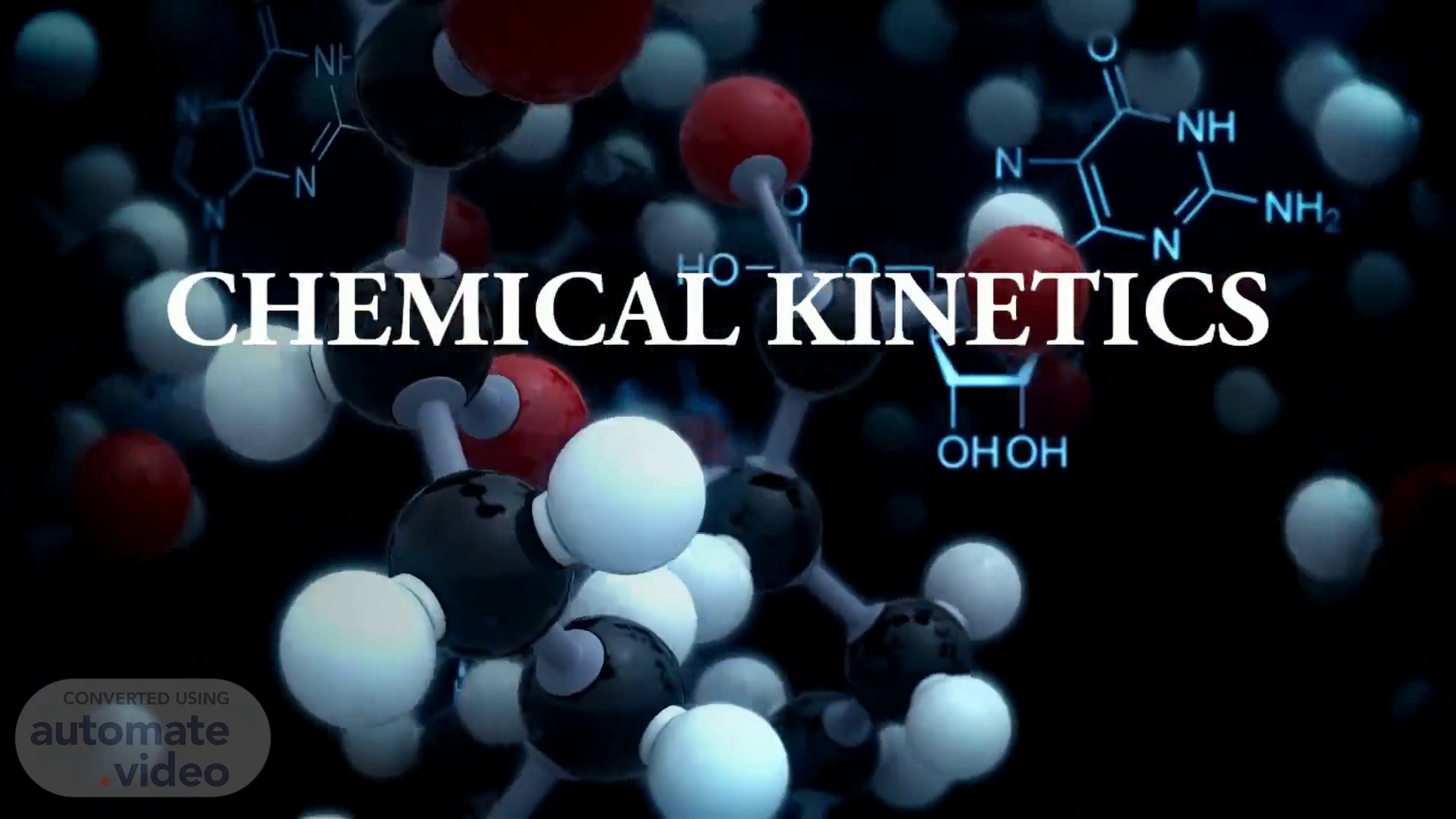Scene 1 (0s)
CHEMICAL KINETICS.
Scene 2 (6s)
[Audio] Chemical kinetics is the branch of physical chemistry that is concerned with understanding the rates of chemical reactions. It provides evidence for the mechanism of chemical reactions . To study the RATE of chemical reactions. One can monitor the appearance of products, or the disappearance of reactants. So, for example, doubling the concentration of reactant A doubles the reaction rate . Similarly, cutting the concentration of reactant B by a factor of five reduces the rate by that same amount . k is the rate constant..
Scene 3 (46s)
[Audio] Factors influencing the Rate of Reaction 1) The Nature of the Reactants Reactions between molecules that require covalent bonds to be broken tend to proceed very slowly. Therefore, certain structural characteristics of the reactant molecules, such as bond polarity, geometry, overall size and orientation influence the rate of reaction. 2) The Concentration of the Reactants We know that for most reactions, the rate of reaction will increase as the concentration of the reactants increases. Increasing the concentration of a reactant means increasing the number of reactant molecules that are in that same volume.For many reactions (not all), there is a direct relationship between the concentration and rate of reaction. Therefore, when the concentration doubles, the rate of reaction also doubles. We can explain this using the collision theory which says that if we double the number of reactant molecules, there will be twice as many collisions occurring at the same time. 3) The Temperature of the Reactants In nearly all cases, the rate of a reaction increases with increasing temperature. Each time the temperature is increased by 10°, the rate of reaction doubles! This effect is extremely powerful. For instance, for a rise in temperature from 20° to 80°(which is six 10° increments), the rate of reaction will occur 26 = 64 times faster. That is a great change in rate..
Scene 4 (2m 27s)
[Audio] 4) The Presence of a Catalyst A Catalyst is a substance that increases the rate of reaction without actually participating in the reaction. Catalysts work by providing an alternate pathway for the reaction. It is the one which requires less energy for the reactants to convert into products. Some catalysts increase the rate of more than one type of reactions whereas catalyst like the enzymes in our bodies is specific to just one reaction or even one single type of reactant molecule. Therefore, a catalyst increases the rate of reaction. 5) SURFACE AREA Smaller the particle size, greater the surface area and faster is the reaction. So powdered form of catalyst is better catalyst..
Scene 5 (3m 20s)
[Audio] RATE CONSTANT [K] Rate constant may be defined as the rate of reaction when the concentration of all the substances appearing on the rate law are unity. Here are the Characteristics of Rate constant : It has a constant value for a given reaction at a given temperature Its value increases with increase in temperature Its value does not depend upon initial concentration Faster reactions have higher values of rate constants Its unit depends upon the unit of time and concentration and order of reaction.
Scene 6 (4m 0s)
[Audio] THANK YOU. Flask. THANK YOU. abstract. abstract.
